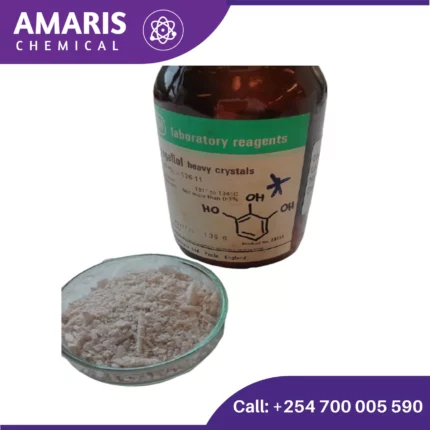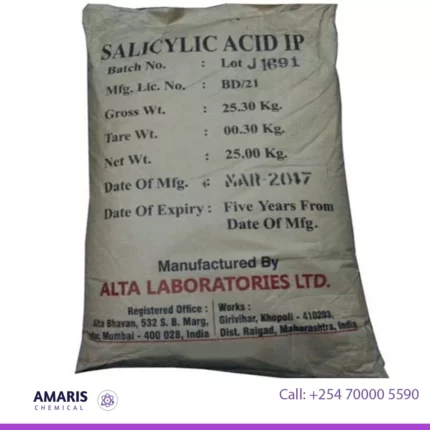Shipping & Delivery
Related products
African Potato Extract
Potato extract is a concentrated solution made from potatoes through a process that involves crushing, grinding, and filtering. It typically contains a range of nutrients found in potatoes, such as vitamins, minerals, and antioxidants, as well as other compounds that are unique to potatoes. Potato extract is commonly used in the food industry as a natural ingredient to enhance flavor, texture, and nutritional value of various products. It is also used in the cosmetic industry for its skin-soothing and anti-aging properties.
Menthol crystals
KSh0.01
Menthol crystals refer to solid, colorless, and translucent substances derived from the natural compound menthol, which is obtained primarily from peppermint or other mint plants. These crystals are known for their distinctive cooling sensation and minty aroma.
Menthol crystals are composed mainly of menthol, a cyclic alcohol, and possess various properties that make them widely used in the pharmaceutical, cosmetic, and food industries. They are soluble in alcohol and oils but only sparingly soluble in water. When applied or inhaled, menthol crystals produce a cooling and soothing effect on the skin or mucous membranes, resulting in a refreshing sensation.
Their versatility and pleasant sensory properties make menthol crystals a popular ingredient in numerous products, including ointments, creams, balms, toothpaste, chewing gum, lozenges, and more. They are frequently used to provide relief from minor skin irritations, respiratory congestion, and oral discomfort.
Nicotinamide
KSh0.01
Nicotinamide (also called niacinamide) is a water-soluble form of vitamin B3. It plays a key role in cellular metabolism by serving as a precursor to nicotinamide adenine dinucleotide (NAD+), which is essential for energy production and DNA repair.
Uses:
- Skincare: Helps reduce acne, inflammation, and hyperpigmentation.
- Supplements: Supports brain function, reduces fatigue, and may aid in preventing pellagra (a niacin deficiency disease).
- Medical Applications: Used in some treatments for diabetes, arthritis, and neurodegenerative disorders.
Powder Sodium Mono Fluoro Phosphate [Na2PO3F]
Sodium monofluorophosphate (Na₂PO₃F), commonly abbreviated as SMFP, is a compound used in dental care products, particularly toothpaste, for its anti-cavity properties. Here are some key points about it:
- Chemical Composition:
- Formula: Na₂PO₃F
- Molar Mass: 143.95 g/mol
- Appearance: White, odorless powder
Pyrogallol Crystals 25gm
Active Pharmaceuticals Ingredients, Analytical Reagents, Electronic Chemicals, Microbiology and Cell Culture Reagents
salicylic acid
KSh0.01
Sodium Nitrite 500gm
Sodium nitrite (NaNO2) is an inorganic compound composed of sodium and nitrite ions. It appears as a white to slightly yellowish crystalline powder and is highly soluble in water. Sodium nitrite is commonly used as a food preservative and color fixative in meats and fish, as it inhibits the growth of bacteria and maintains the red-pink color of cured products. In addition to its use in the food industry, sodium nitrite serves various roles in industrial processes, such as in the manufacturing of dyes, rubber chemicals, and pharmaceuticals. It also finds applications in wastewater treatment and corrosion inhibition. However, sodium nitrite must be handled with care due to its toxic and potentially carcinogenic properties when ingested in large quantities.
Trypsin 100gm
Trypsin is an enzyme that plays a crucial role in digestion. It belongs to a class of enzymes called proteases, which break down proteins into smaller peptides and amino acids. Trypsin is produced in the pancreas as an inactive precursor called trypsinogen, which is then activated in the small intestine by another enzyme called enterokinase.
Once activated, trypsin catalyzes the hydrolysis of peptide bonds in proteins, specifically targeting the carboxyl side of the amino acids lysine and arginine. This process is essential for the digestion of proteins into smaller peptides and amino acids, which can be absorbed by the intestines for nutrient uptake.
Trypsin is also used widely in biochemical research and biotechnology, particularly in protein analysis and manipulation. Its ability to selectively cleave peptide bonds makes it a valuable tool for studying protein structure and function.



















